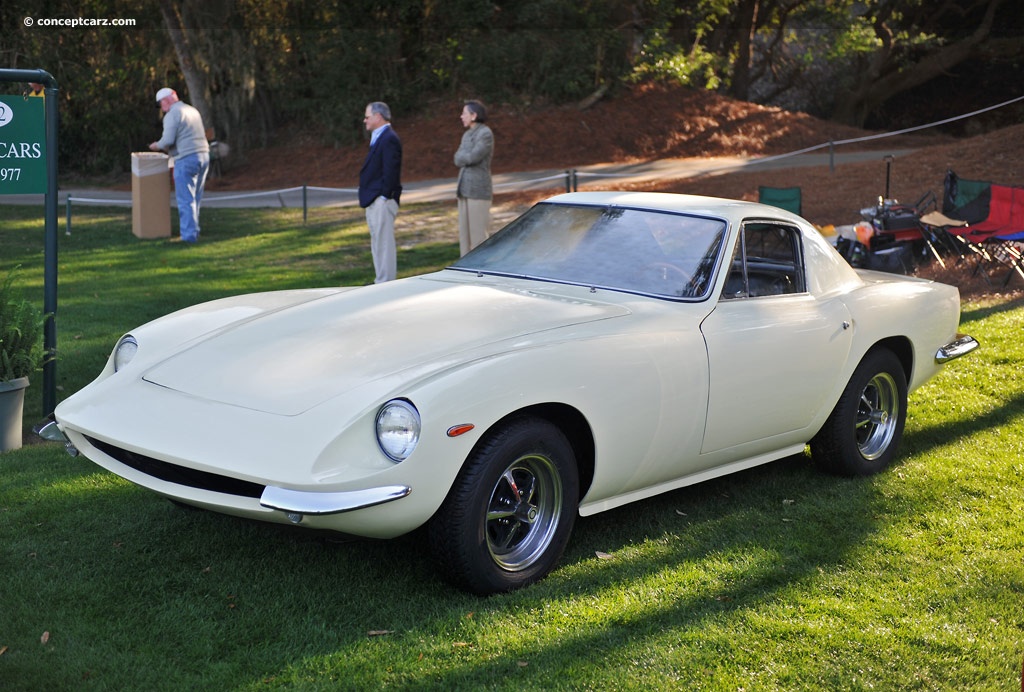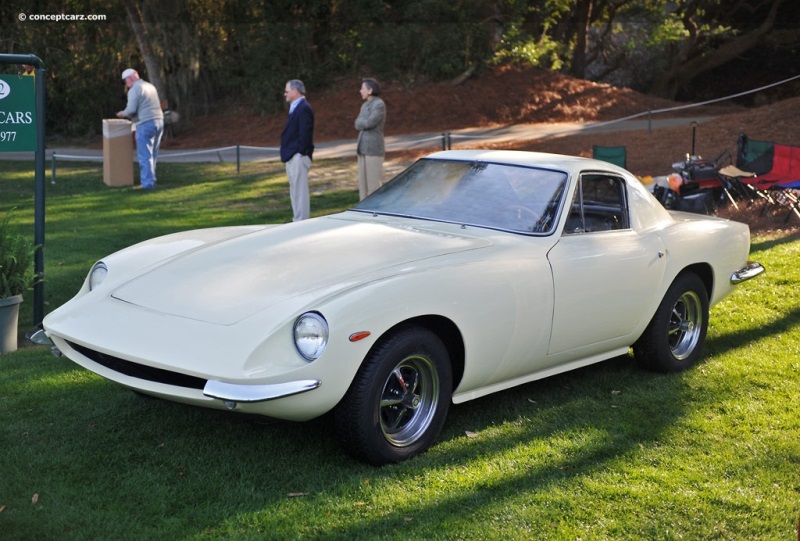The Griffith 600 belongs to an unrepeatable automotive era. It is the kind of car that will never happen again. Its history is convoluted and confusing, fraught with financial difficulty and ultimate failure. But the Griffith 600 represents a moment of undiluted possibility when, before government regulations and fuel crises transformed the industry, founding an independent company to produce exotic automobiles really was an attainable dream.
Sports Coupe
View info and historyOf course, attaining that dream was never easy. Jack Griffith, like so many hopefuls before him, learned that lesson the hard way with his Griffith 600. Griffith sold painfully few examples of this car before his company's inevitable collapse. His ambitious sports car, though, existed as a swan song of the pre-giant rubber-bumper days. Exotic, handsome, and genuinely fast, the Griffith 600 stood as living, driving proof that, once upon a time, automotive dreams really could come true.Jack Griffith was not alone in his endeavors, as the birth of the Griffith 600 intertwined tightly with the histories of two other small carmakers: TVR and Intermeccanica. That said, Griffith was alone in feeling the effects of his project's failure; TVR went on to relative success as the maker of tiny but potent fiberglass sports cars, and Intermeccanica continued as a builder of cars of its own design and later as a producer of high-quality replicas. Regardless of its commercial failure, the Griffith 600 was a captivating automobile and the details of its hectic past are worth recounting.The story of the Griffith car company begins with TVR. A Brit named Trevor Wilkinson built his first automobile in 1947 and went on to produce some very fine—and often very strange—sports cars under his distinctive brand name, which he derived from three of the letters in his first name: TreVoR. By the 1960s, TVR was producing its first real production model, the Grantura. This diminutive coupe with fiberglass bodywork and steel backbone chassis was a balanced and capable car for discerning drivers. It proved plenty fast for British roads, even when powered by tiny four-cylinder engines brought in from various manufacturers.Very little driving in America, though, was done on roads similar to those in Britain for which the TVR Grantura was intended. The Grantura was not underpowered by anyone's standards, but certainly, the car lacked the sort of torque and effortless propulsion favored by American drivers for their wide-open, straight-to-the-horizon highways.A Ford dealer from Long Island by the name of Jack Griffith developed a solution to this 'problem.' Shoehorning a Ford V8 with up to 271hp under the long bonnet of a Grantura, he created the Griffith 200 and subsequent Griffith 400. These cars offered ferocious acceleration and distinctive looks. Griffith, though, was at the mercy of TVR, so when the British carmaker ended the production of Grantura bodies, Jack Griffith had to seek out a new and equally outrageous platform to squeeze a V8 into.This is where Intermeccanica's story gets tangled with Griffith's. A Hungarian chemical engineer named Frank Reisner established Intermeccanica in 1959. That's not to say that Intermeccanica was a Hungarian car company. Reisner fled Hungary with his family when he was very young, moving to Canada and studying chemical engineering at the University of Michigan. He later moved back to Europe with his Czech wife, and the two of them settled in Italy. So Intermeccanica was founded by a Canadian-raised, American-trained Hungarian living in Italy.The knowing worldview that Reisner surely possessed seems to have informed his products at Intermeccanica. His cars were distinctive and dynamic. Some were beautiful, some were…interesting. All of Intermeccanica's products, though, were innovative. Even when the company began producing replicas of the Porsche 356, it tried to improve on the original design. Though Intermeccanica was a crucial player in the creation of the Griffith 600, the Intermeccanica and Griffith companies touch only a single historical point. Upon seeing an Intermeccanica Apollo in person, Jack Griffith became convinced that he should create a successor to his 200 and 400 models with a curvaceous steel body supplied by the Italy-based firm. Thus the Griffith 600 debuted, a formidable performer powered by a powerful Plymouth V8, styled by Franco Scaglione (creator of the Alfa Romeo 33 Stradale to name arguably his finest design), and underpinned by a chassis that John Crosthwaite, previously of BRM, developed. Clearly, the car had a lot going for it—but apparently not enough. Griffith created only a few examples of the 600 before the project was bought up by Steve Wilder and the cars were renamed Omegas. Only about a dozen 600s were created (production varies from source to source, with some saying as few as 6 and others as high as 14).And that was that. No more Griffiths. Jack Griffith's enthusiasm seems to have surpassed his business sense in this case, and the 600 ended up almost dead on arrival. Luckily, Intermeccanica continued to build cars based on the Griffith 600 concept even after the small run of Omega-branded vehicles. These later models labeled Intermeccanica Torino and then Italia, were more commercially successful with about 500 units sold. So the Griffith 600's history is that of a car born into a marketplace rife with possibility, but also with volatility. Jack Griffith's idea was a superb one, and it likely couldn't have come to fruition at a later date. Even in the 1960s, though, it took more than just a good idea to keep a car company afloat. Jack Griffith fell victim to his own ambitions. But is there any better way to go out?Sources:'Bahr's Complete History of Intermeccanica International.'Intermeccanica Enthusiasts Club.
n.d. n. page. Web. 19 Jun. 2012. http://intermeccanica.org/.Rogliatti, Gianni. 'Frank Reisner's Intermeccanica: One of the Few That Made It.' Automobile Quarterly. 9.3 (1970): n. page. Print.Strohl, Daniel. 'Hemmings Find of the Day – 1969 Intermeccanica Italia.' Hemmings Blog. 07 Apr 2011: n. page. Web. 19 Jun. 2012.
http://blog.hemmings.com/index.php/2011/04/07/hemmings-find-of-the-day-1969-intermeccaninca-italia/. 'TVR History.' John's TVR Homepage. n.d. n. page. Web. 19 Jun. 2012. http://homepage.mac.com/tvr43/history.html.
By Evan Acuña

Sports Coupe
View info and history
n.d. n. page. Web. 19 Jun. 2012. http://intermeccanica.org/.Rogliatti, Gianni. 'Frank Reisner's Intermeccanica: One of the Few That Made It.' Automobile Quarterly. 9.3 (1970): n. page. Print.Strohl, Daniel. 'Hemmings Find of the Day – 1969 Intermeccanica Italia.' Hemmings Blog. 07 Apr 2011: n. page. Web. 19 Jun. 2012.
http://blog.hemmings.com/index.php/2011/04/07/hemmings-find-of-the-day-1969-intermeccaninca-italia/. 'TVR History.' John's TVR Homepage. n.d. n. page. Web. 19 Jun. 2012. http://homepage.mac.com/tvr43/history.html.
By Evan Acuña
Griffith
Similar Vehicles

1967 Griffith 600 Vehicle Profiles
Recent Vehicle Additions
Performance and Specification Comparison
Related Automotive News

Radnor Hunt Concours 2017
The Philadelphia Vintage Grand Prix was failing. The parks department and city put up enough bureaucratic roadblocks to make survival difficult. An event organizer and Radnor Hunt member Mike Tillson redirected his energies. He recalls approaching...

1964 Nurburgring 1000 Kilometers: Survive for One Last Victory
During the late 1950s, Richie Ginther would begin a relationship with John von Neumann and this partnership would result in one of the most dominant periods of American sportscar racing in which Ginther and Porsche would be virtually unbeatable. Nearly...

Corvette Shines in the Big Apple
All-new Corvette Stingray comes to New York City 60 years to the day after Motorama debut
2013-01-16 Sixty years ago tomorrow, spectators lined New York Citys posh Park Avenue, waiting to get a glimpse of the ground-breaking Chevrolet...

1967 Can-Am Road America: The Beginning of the 'Bruce and Denny Show'
While Formula One will be forever considered the pinnacle of motorsport, from a period between 1966 and 1986 there existed a series that would likely be the closest to anything goes as any motor racing series could truly get. Based upon the FIA Group...

Carroll Shelby, Ford Family for More Than Half a Century
Carroll Shelby was a member of the Ford family for the better part of 60 years, producing stunning performance vehicles from concepts to production models.
He once said his energy and passion for performance products were always strongest when he was...






